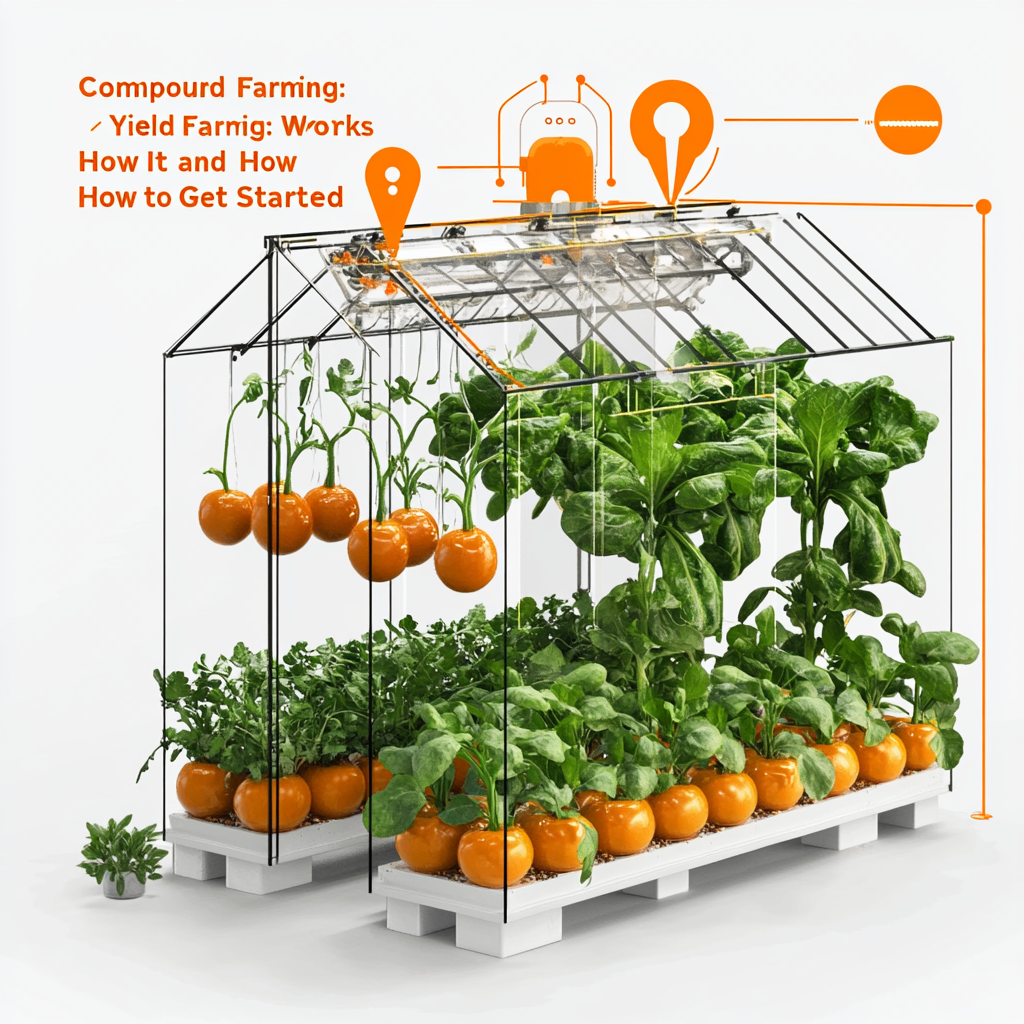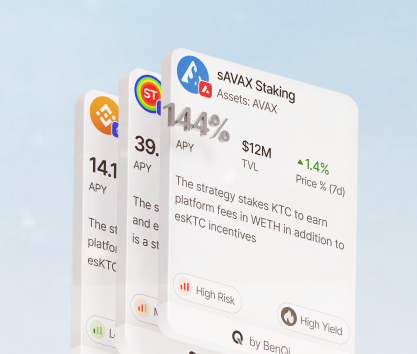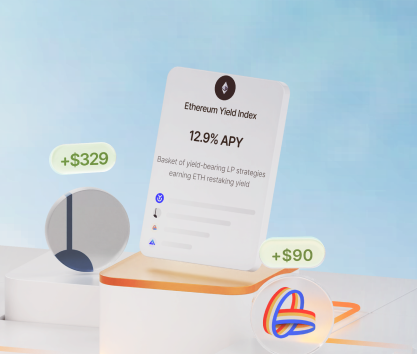The idea of calmly waiting for a guaranteed paycheck by allocating capital in the safest asset classes possible does not sit right with many crypto enthusiasts chasing higher returns and tolerating dangerous risk levels. The area of decentralized finance is a perfect environment for investment opportunities focused on increasing profits against all odds.
The concept of compound yield farming is quite simple on paper yet requires a whole lot of analyzing and thoroughly thinking about each decision. With 75 DeFi yield platforms listed on Moralis and hundreds of different pools to choose from, even finding a good place to engage in this strategy is easier said than done.
The last five years have been fruitful for investors seeking new opportunities to earn tokens. Even Bitcoin layer 2 Dapps offer various investment options (i.e. Arkadiko and Light Finance on Stacks). Using the growing cohort of DeFi services focused on generating passive income is a great avenue for people who want to achieve consistent returns from their crypto capital.
What is compound DeFi yield farming?
A decentralized exchange needs liquidity to operate. It is provided mostly by individual token holders who deposit their holdings in specialized wallets to generate returns in another asset, often issued by the DeFi protocol itself. In some cases, you will be awarded special “wrapped” versions of staked coins which can also be locked in or traded if you need to liquidate a position.
Profits can be reinvested to increase positions and receive even bigger rewards. This process of reinvesting is called compounding and makes even comparatively low APR/APY look incredibly good in the long run. Let’s look at two examples:
- You invest $10,000 for a 5% APR for 1 year without compounding. The return will be, as expected, $500.
- You invest $10,000 for a 5% APR compounding daily for 1 year. The return will be $512.
The difference between the two outcomes seems insignificant as it is just 2.4% which is not a lot. However, it is important to look at compounding from the perspective of a multi-year investment where it really shines. Let’s look at the same two examples for a 5-year period:
- Investing $10,000 for 5% without compounding will yield $2,500.
- The same initial deposit with daily compounding will bring in $2,840.
The nominal difference now is $340 but percentage-wise it increased to 13.6%. The effect is even bigger if you take a 10-year (29.7%) or a 40-year (279%). Usually, investments are compounded annually and the difference is less impressive, but it is still there.
When it comes to the crypto industry, the principle remains the same. You receive rewards in wrapped or governance tokens daily. Profits are immediately reinvested to further increase future gains. Additionally, many investors engage in leveraged yield farming by taking on debt and magnifying potential returns.
In general, compound farming strategies allow investors to achieve greater results in the long run. The problem here is one of the biggest risks associated with staking digital assets — their price against fiat or even collateral used to increase a position can fluctuate dramatically. Any price drop will eat away from any gains acquired during the investment period.
Carefully assessing portfolio composition, avoiding automatic rebalancing, and monitoring the market are all activities that should be prioritized.
Maximizing returns with compound yield farming
Conservative strategies are driven by loss aversion when investors are afraid of losing money more than they are excited about making it. Hedging against various risks, shorting long positions, using complex statistical arbitrage approaches, and many other tricks are designed to reduce portfolio exposure as much as possible.
When it comes to compound yield farming, the game is different. Risk tolerance must be higher and many decisions have to circle the idea of increasing potential returns without overly exposing holdings to the dangers of the crypto market. Finding the right balance is crucial for such strategies.
Here are some straightforward ways to improve APYs:
- Contribute to the stake regularly. Adding funds periodically can be a good way to grow a market position and enjoy better profits. Some retail traders use automated DCA bots to acquire assets at opportune moments. Purchased coins can be immediately staked to strengthen your portfolio and improve yields.
- Use auto-compounding platforms. Beefy Finance or Harvest Finance are good examples. You can use these services to automatically collect rewards without missing the unbounding window and grow positions naturally as quickly as possible. Some investors also prefer rebalancing when the composition of assets is adjusted to maintain a certain ratio.
- Take a loan against collateral. You can use some coins as collateral to borrow other tokens and stake them to receive rewards. An investor should strongly consider several important factors such as opportunity cost (impermanent loss) and interest payments on loans which can be higher than returns if you do not pay close attention to APRs. The best compound yield practices often involve at least some amount of debt.
- Avoid delta-neutral approaches and hedging in general. This seems like counter-intuitive advice, which it is. However, if your goal is to maximize potential gains, you have to forgo risk aversion approaches to save on overheads and improve the bottom line. This method should only be employed during bullish periods in the market when its course appears to be semi-predictable.
Remember that higher returns are always accompanied by amplified risks. Taking on debt, avoiding hedging, and contributing systematically regardless of market conditions are all highly risky approaches that should be used only by experienced investors and people who can afford to lose their investments without ruining their financial situation.
Managing risks in compound yield farming
Trying to find the biggest APR and focusing on maximizing the earning potential of your holdings should be important to a certain degree. However, avoiding investments with low chances of producing actual profits is crucial. Some APYs range in the thousands (i.e., King Sugar Glider on Orca-Solana has a ludicrous 253,000% APY), but they are often meme tokens, illiquid assets, or hyperinflated coins.
When focusing on reputable projects like Curve (12.37% base APY) or Solv (13.35%), both with TVLs over $33 million, searching for the right balance between risks and returns should be your top priority because real yields can be just a couple percentage points above well-paying bank deposits. The difference can be nullified by gas fees, impermanent loss, and any interest payments if you decide to take on debt.
You can reduce portfolio exposure by using several approaches:
- Hedge yield farming positions. A simple way to do so is by using derivatives like perpetual futures to short assets in a stake. This allows you to counter sudden price drops while maintaining locked investments if you want to. Instead of liquidating at a loss, you may even make some money if market circumstances favor your overall position.
- Engage in delta-neutral farming. Hedging is a part of this particular technique, but it can be done in many other ways without using derivatives. For example, you may provide $USDC to a pool and borrow $ETH against it. Staking loaned tokens is a way to implement a delta-neutral position due to the opposite changes in prices between the stablecoin and staked assets since you will need to return the debt in $ETH.
- Avoid spreading out capital. The very idea of yield farming on compound interest is that you need to concentrate available funds in a single position to maximize yields. Many investors even take on debt to increase their holdings. Allocating money across multiple digital assets may seem like a reasonable thing to do as you diversify investments, but you will reduce the earning potential of each individual position. If the goal is to balance your portfolio instead of maximizing gains from compounding interest, by all means, put the money into several pools.
- Consider lending and borrowing stablecoins only. Liquidation risk is one of the most prominent ones when it comes to risk management in compound interest investments. The likelihood of it depends on the volatility of the asset. If prices move up and down dramatically, it means that position will come to the dangerous threshold close to being liquidated quite often. It is possible to both lend and borrow stablecoins pegged to the US dollar. For example, you may lend $USDC to get $DAI or something similar.
Before you can make your first deposit, you need several things. We will approach this issue as if you are a complete newbie and do not know much about the inner workings of the crypto industry. Below are the steps that you will need to make to start working with DeFi protocols:
- A flexible software crypto wallet. The vast majority of decentralized platforms can connect to a supported wallet. If you plan to focus on ERC-20 tokens (Ethereum smart contract standard) then pick MetaMask as it is supported by all EVM-compatible protocols.
- A starting capital should be a no-brainer. Purchasing relevant tokens is the first step. Many wallets have direct integrations with DEXs and allow users to buy what they need quickly. Remember to hold some mainnet tokens ($BTC, $ETH, $MATIC, etc.) since they are needed to pay gas fees later on.
- Pick a solid protocol offering liquidity mining with compound interest or something similar. You can check out a variety of interesting platforms like Beefy Finance, Stacks protocols, and more to find good pools, use auto-compounding, and other excellent features.
- Invest in a pool and don’t forget to collect rewards. Most pools have an unbounding period during which rewards and stakes can be picked up by users without any hassles. Otherwise, you may find funds inaccessible. Keep track of these time windows manually or simply use auto-compounding to allow protocols to collect and reinvest rewards in your stead.
Investors interested in maximizing compound returns should also look into leveraged yield farming often offered by CEXs like Crypto.com, Coinbase, Binance, and others. It is also possible to take out a loan against collateral manually. In such cases, calculating potential profits while taking into consideration loan costs, impermanent losses, and liquidation risks is imperative.
Examples of compound yield farming strategies
Crypto investors have a rich selection of lucrative investment opportunities lying before them. One must remember that many promising money-making prospects come with significant risks. Trying to juggle several different capital allocation techniques at once can be detrimental in the world of crypto. If you have limited funds to work with, consider focusing all your attention on a single approach that seems to be working well.
- Liquid staking. Among compound yield farming strategies, this one always stands out since many crypto investors do not like the idea of keeping their coins locked up. Protocols like LIDO offer users an opportunity to stake $ETH or some other tokens and receive liquid tokens in exchange. These can be traded, swapped, lent, or further staked for additional rewards. Many crypto enthusiasts believe that this method is great as it provides capital while allowing them to keep mainnet coins staked. As of the time of writing, LIDO had close to $10.1 million in TVL.
- Investing in auto-compounding platforms. Beefy Finance, Harvest Finance, and many similar platforms offer users a way to automatically collect rewards from different pools and instantly restake them for additional returns. It is a good choice for newcomers or those investors with hectic lifestyles. With these platforms, you won’t have to track unbounding windows or manually reinvest them. Everything is done automatically with protocols searching for the best opportunities without any oversight from users.
- Yield stacking. This is a high-risk strategy that can be quite effective during bullish periods in the crypto market. The term refers to the practice of using liquid tokens for additional staking rewards. For example, you can use stETH to get a stake at KELP DAO for APY on top of what you are getting from LIDO. If you get 5% APY from the latter and an additional 3.5% interest from KELP, the total APY will be 8.5% since stETH will be equal in value to staked $ETH. Remember that stacking increases risk with each new layer of reinvestment.
In conclusion
DeFi yield farming on compound interest rates feels like a great idea to many investors. Inexperienced newcomers should focus on researching potential risks and understand how these strategies produce profits. A good idea is to start small and experiment with different platforms using tiny fractions of your portfolio. Expose holdings only after having some first-hand experience with target DeFi protocols!









